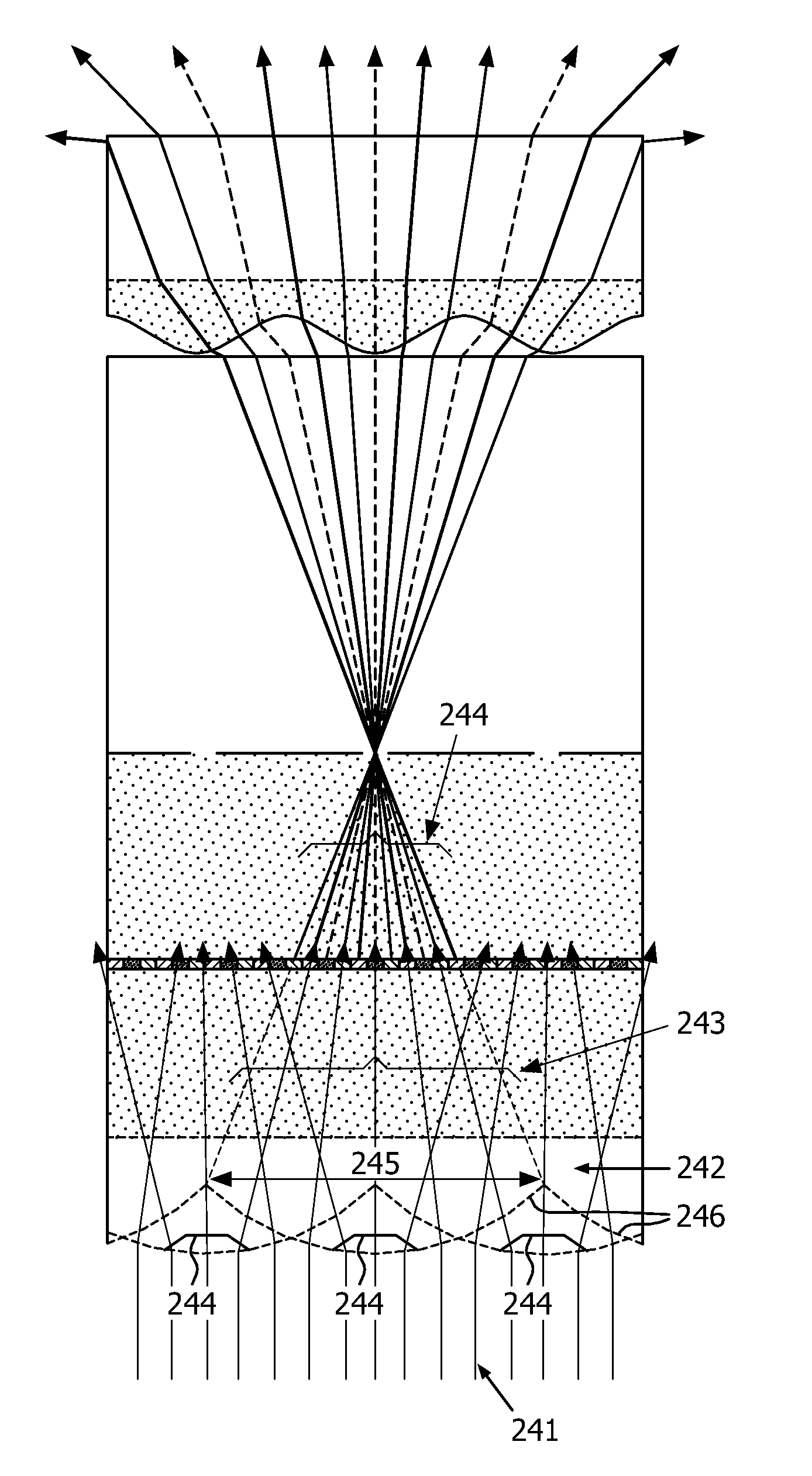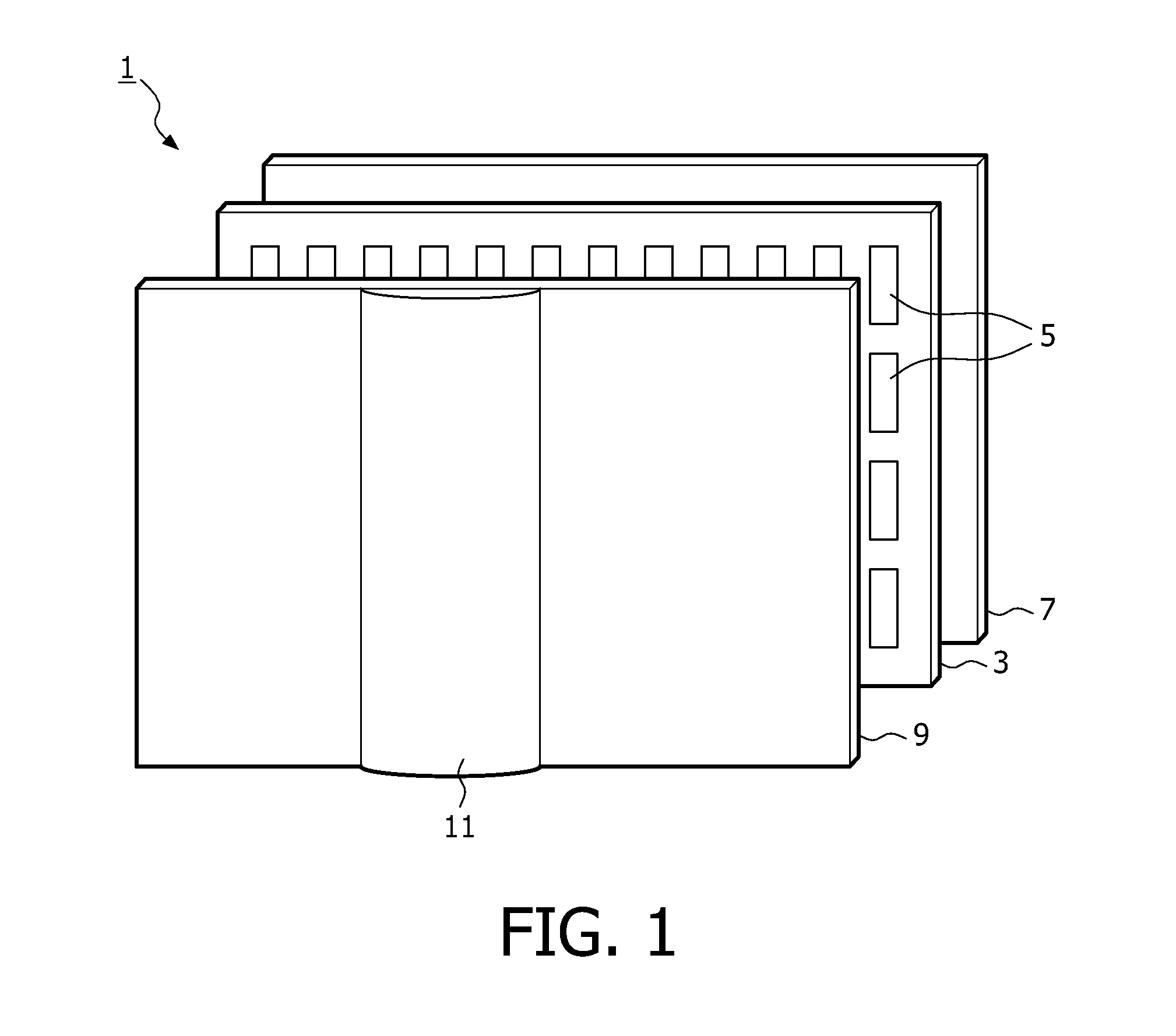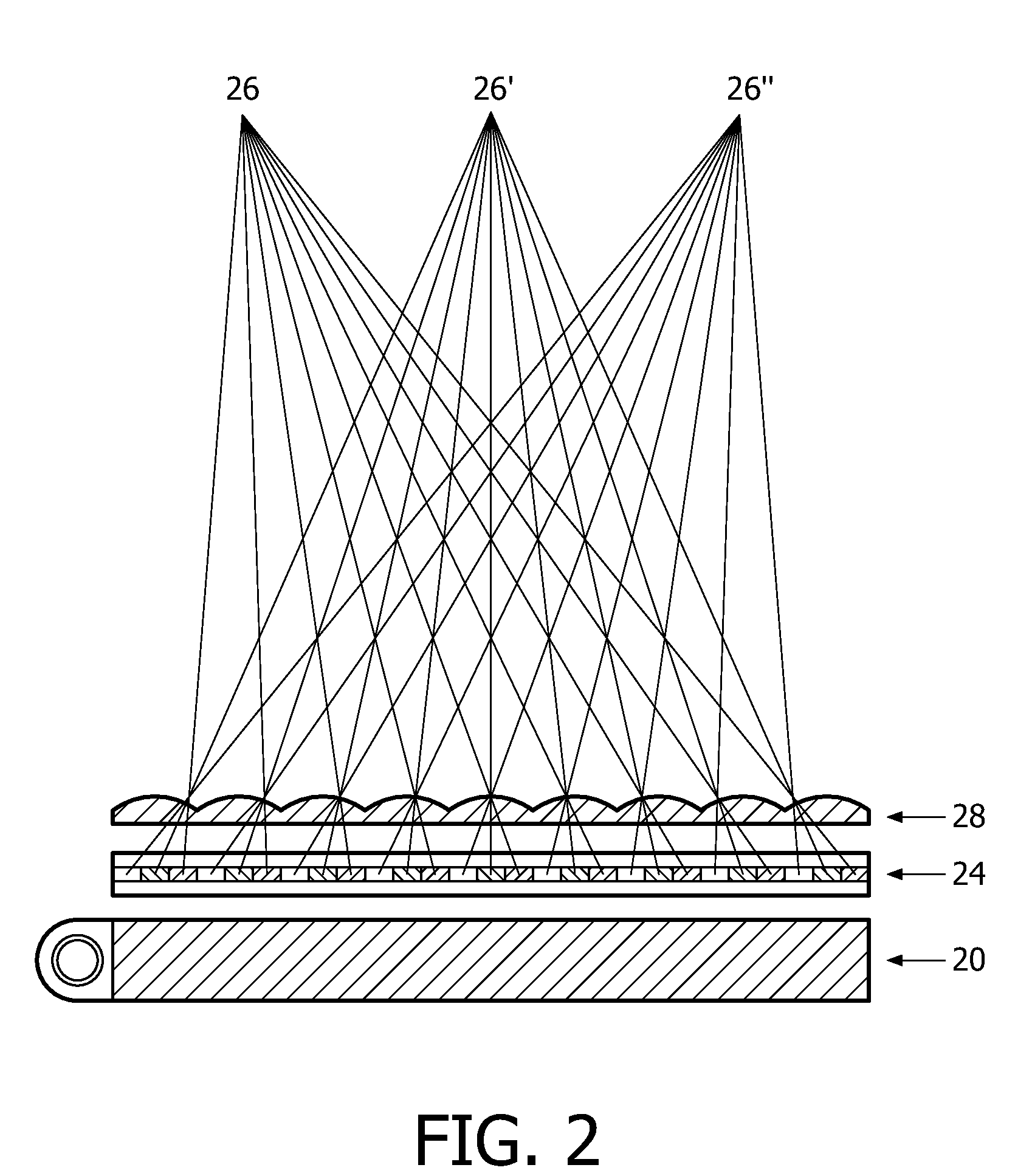Autostereoscopic display device
a display device and autostereoscopic technology, applied in the direction of illuminated signs, display means, instruments, etc., can solve the problems of reducing the resolution of the display device, reducing the number of views generated, and simple barrier arrangement, etc., to reduce the number and eliminate the boundaries of the viewing cone
- Summary
- Abstract
- Description
- Claims
- Application Information
AI Technical Summary
Benefits of technology
Problems solved by technology
Method used
Image
Examples
first embodiment
[0078]A first embodiment according to the invention will be described next with reference to FIG. 7, which shows the ideal solution of the problem of the occurrence of repeated cones and cone transitions. FIG. 7 shows a system 70 having only a single cone 71 consisting of many views (i.e. the angle (Φ) is close to)180°, so that there are no cone transitions. Thus, the viewing cone width is the same as the field of view of the system 70.
[0079]FIG. 8 shows a basic embodiment for such a “single cone” display. It consists of a display having a display panel with a pixel plane 86 equipped with a barrier 80 with relatively narrow transparent apertures (slits) 82. The barrier is spaced from the display panel with a distance D. The light 84 stemming from a backlight lighting arrangement (not shown) enters the glass 81 of the display from the backlight-side. Inside the glass, the angle of the incoming light with the display normal varies between 0° and 42° (assuming that the light from the b...
second embodiment
[0094]An autostereoscopic device 100 according to the invention is described with reference to FIG. 10. Again, there is only a single viewing cone spanning the field of view 102. In this case, the density of views is high at small viewing angles and low at large viewing angles. This results in a good 3D image quality at relatively small viewing angles (in the lateral direction) for e.g. viewer 105 and a good 2D image quality at larger viewing angles for e.g. viewer 104.
[0095]Thus, the views 101 including e.g. views 101′, 101″ and 101′″ are distributed in a non-linear manner. That is to say, the views are arranged such that the view spacing is small for views leaving the display almost perpendicularly (i.e. small viewing angles such as e.g. view 101′″). For increasing viewing angle, the view spacing is increased (such as for e.g. views 101″ and 101′). Not all views thus have the same view width.
[0096]As mentioned above, the smaller the angular spacing between neighboring views the m...
third embodiment
[0120]A third embodiment with increased barrier lens distance is shown in FIG. 14a. The main lens is cosine-shaped. When compared to the previous embodiment, the barrier-lens distance has doubled. The lens pitch has remained the same, but the lens touches the underlying glass only once per pitch. The rays coming through a barrier aperture are “captured” by actually two (or, alternatively, half+one+half) lenses. A part of the lens that acts as “central part” for one barrier aperture acts as “edge part” for the neighboring aperture. Each part of the lens is used two times, i.e. irradiated from two apertures. The advantage is that the lens can be less curved in the centre. As a result the barrier aperture can be increased and a less negative lens is needed to collimate the central views. In this case, the ratio of the distance dl of the lenses 120 from the display panel 86 to the distance db of the barrier arrangement 80 from the display panel 86 is preferably in the range 2.5 to 3.5.
[...
PUM
 Login to View More
Login to View More Abstract
Description
Claims
Application Information
 Login to View More
Login to View More - R&D
- Intellectual Property
- Life Sciences
- Materials
- Tech Scout
- Unparalleled Data Quality
- Higher Quality Content
- 60% Fewer Hallucinations
Browse by: Latest US Patents, China's latest patents, Technical Efficacy Thesaurus, Application Domain, Technology Topic, Popular Technical Reports.
© 2025 PatSnap. All rights reserved.Legal|Privacy policy|Modern Slavery Act Transparency Statement|Sitemap|About US| Contact US: help@patsnap.com



